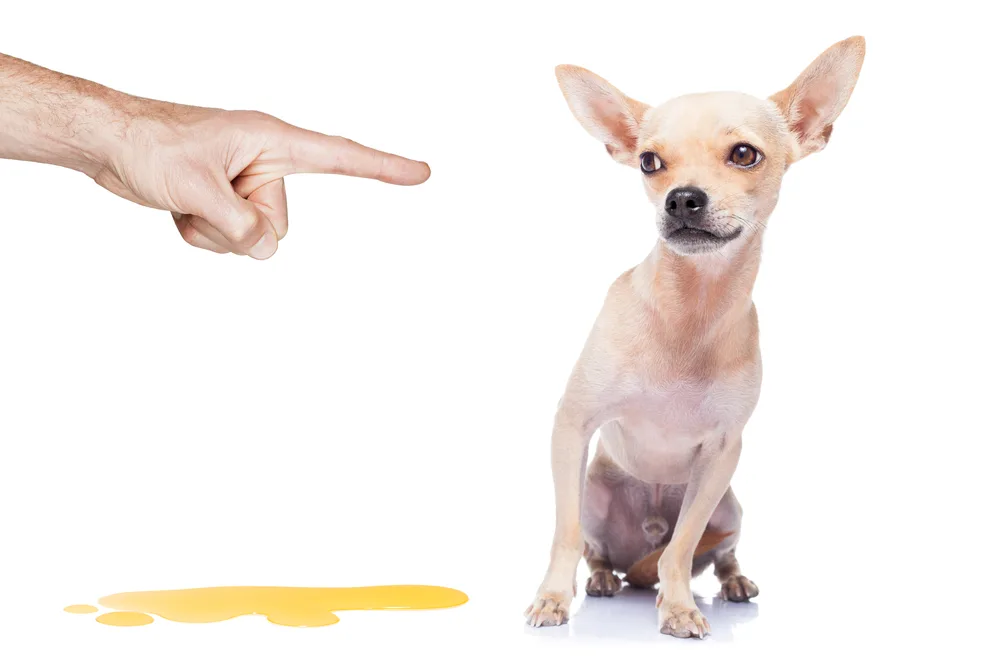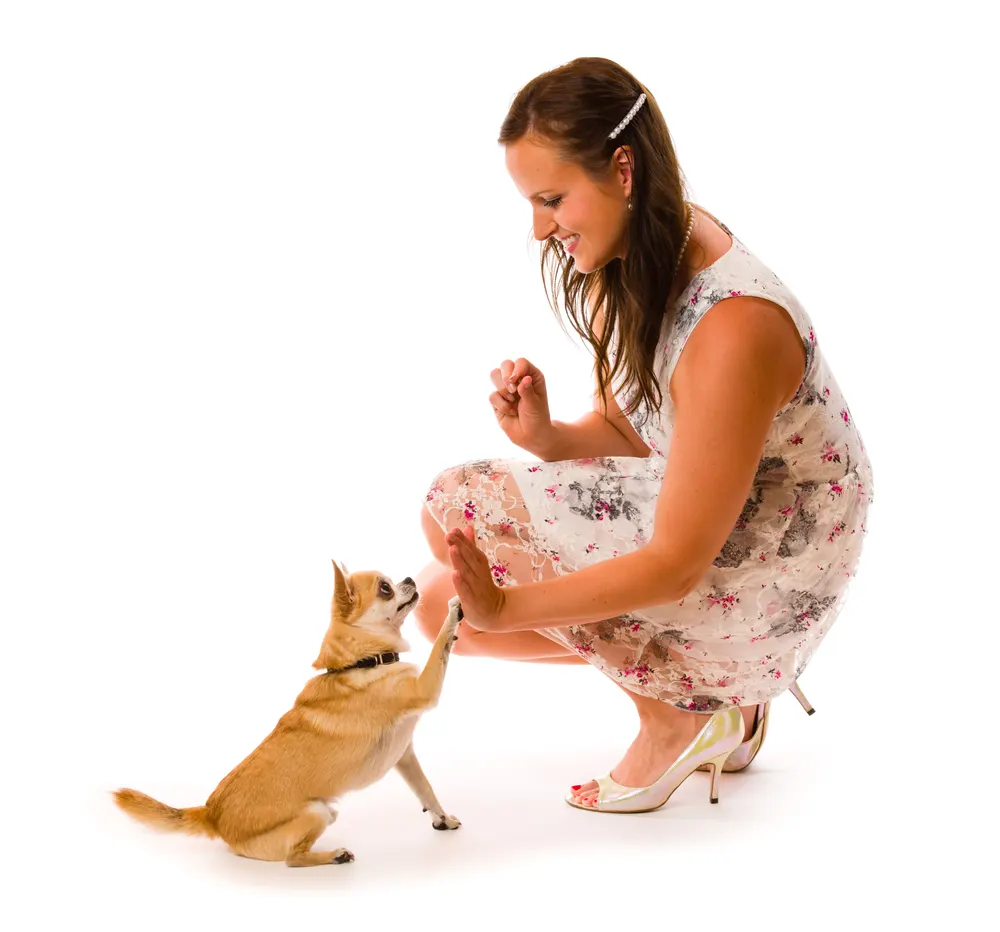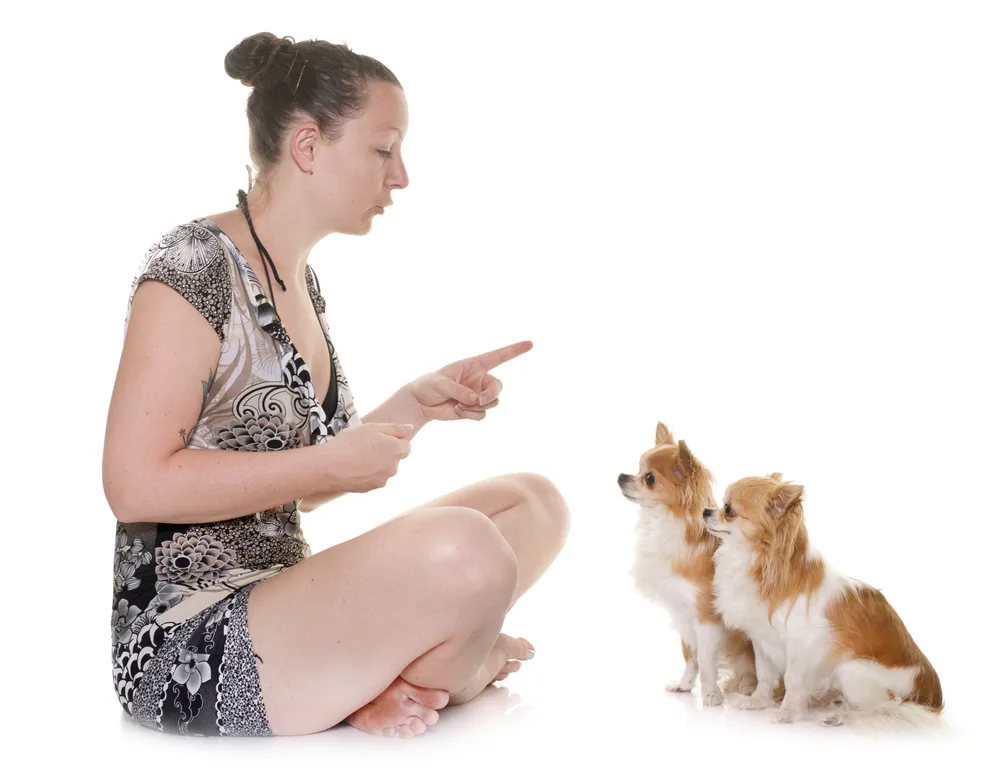There comes a time in every dog owner’s life that their dog does something inappropriate, naughty or aggressive that must be addressed. However, how you punish your dog matters greatly; it has the potential to create more problems than it solves in the event that it is not done properly.
This article will offer you the guidance you need when your dog is less than angelic.
How To Communicate Right vs. Wrong Behaviors To Your Dog

Firstly, we need to discuss communicating what you want your dog to do in order to move forward after having to discipline your dog and to get ahead of having to discipline him or her in the future. Here are the basics of communicating proper behavior to your dog:
Practice good ownership.
There are two aspects of good ownership:
1. Proper care
A good dog is usually a tired dog who has a job. Work on training with your dog for at least 15 minutes every day. Be sure to provide exercise in the form of walks and playtime every day, with the duration of the walk and the play activities varying depending on their age.
Dogs who are mentally stimulated are better behaved. A bored dog who never receives training, exercise, or play, seeks to entertain themselves and usually does so in ways that are not appropriate to humans such as chewing up shoes or pillows.
2. Know your dog
Knowing your dog’s personality and quirks goes a long way. For example, if your dog is house trained but starts having accidents randomly, a veterinary appointment should be scheduled to rule out a health issue.
Reward good behavior.
When your dog does something that you want him or her to do, celebrate the win like he or she cured cancer.
Offer attention or a treat, whichever is your dog’s “love language”. Speak in an upbeat, happy voice, smile, and rain down the praise.
Avoid reinforcing bad behavior.
Dogs love attention from humans. If you were not interacting with your dog, then he or she did something bad and you yelled at him or her, many dogs do not register the yelling with the bad behavior. They might not like being yelled at but they ultimately will only know you are now paying attention to them.
If your dog does something wrong, say “No, Bad” firmly once, then clean up the mess and move on. After about 10-20 minutes, engage your dog in something appropriate such as a training session, playing with a toy, or going for walk to give them another activity to do. Do not engage right after the incident of bad behavior, or they will consider it a reward.
Set your dog up for success.
Give your dog opportunities to succeed by working on training every day throughout the day, which is the best way to bond. As your dog learns commands and focuses on listening to you, you are giving him or her the opportunity to behave well and be rewarded for it. For example:
- If you are walking out of a room and your dog is following you, say “come help!” then pet and praise your dog when you reach your destination.
- If you enter a room where you will be sitting down, point to where your dog usually sits or lays down and say “place!” and praise your dog for going to his or her spot.
- Tell your dog to “sit” and “wait” for their meal to be set down; do not allow your dog to attack their bowl of food like a piranha as you are setting it down. When your dog remains seated and looks to you for permission, say “okay!” or “break” or “release”, praising them for listening and showing good “table manners”.
How To Discipline Your Dog When They Don’t Listen

If your dog is not listening to you, enlisting the assistance of a professional trainer is the most effective course of action. Going back to the basics and forming a solid foundation to reset the pack hierarchy may be necessary.
If you don’t want to utilize a live dog training class, I suggest this online class. You will get a lot of great tips by signing up for their free workshop and then if you want to buy their course (which I have taken and highly recommend) you can if you think it would be a good fit.
This might sound odd, but another good place to start is at the veterinarian’s office. If your dog does not respond to you at all regularly, he or she may need their hearing examined.
Of course, not every dog who does not listen is deaf or hard of hearing. If your dog is not listening well, you might not be speaking the right “love language” to reinforce his or her good behaviors. Certain dogs respond to certain things, for example:
- Food-motivated dogs are most responsive when food is involved. So if your dog’s attention is piqued by food, the most effective communication will involve food.
- Toy-motivated dogs are all about toys; whether it be balls, plushies, or bones, you capture their attention with their favorite toy.
- Love-motivated dogs cannot get enough praise and love from their humans. If your dog is constantly seeking attention and would choose to be petted or snuggled over a toy or treat, this is the way to communicate with them.
Once you understand your dog’s “love language”, reinforcing good behaviors becomes simple because you know what he or she responds to best. As the good behaviors are reinforced, your dog will better understand what behaviors are not acceptable.
When your dog exhibits bad behaviors thereafter, firmly say “No”, remove them from the situation as neutrally as possible and ignore them until they have calmed down. Do not offer anything they consider to be a reward to remove them from the situation, just interrupt and end the bad behavior.
How To Discipline Your Dog That Has Been Abused

When you are adopting a dog who has been abused, you must keep in mind that some of the bad behaviors are a result of the abuse or neglect that they have experienced.
That said, when a dog who has been abused does something wrong, you must proceed very carefully; disciplining the wrong way may cause your dog to exhibit worse behaviors out of fear.
The best thing that you can do is pave a way for good behavior going forward when welcoming an abused dog into your home by starting on the right paw to build trust and establish yourself as the pack leader from day one by:
- Establishing a routine or schedule. Dogs thrive on routine. It makes them feel safe.
- Giving the dog a safe place to hide such as a crate when he or she is overwhelmed.
- Offering daily exercise and playtime.
- Working on training for at least 15 minutes once or twice a day.
That said, there will be bumps in the road during rehabilitation and settling into a new pack order. Keep the following in mind:
- Teaching the “leave it” command is the most effective way to redirect a dog who has been abused without disciplining them in a way that could potentially be harmful. Work on this command from day one. Training is also a good way to establish trust and build a dog’s confidence.
- Working with an abused dog requires ample patience and time. Consistent good behavior will not happen overnight.
- Remaining calm is crucial; outbursts of anger may cause him or her to retreat further into their shell which often includes exhibiting bad behaviors.
- Many dogs who were abused or neglected need to be house trained like a puppy; be patient because it is often a new thing for them. For example, if a dog was living outside or was badly abused, accidents will happen as they learn to live in a house or when something happens that scares him or her.
How To Discipline Your Dog That Keeps Marking and Peeing In The House

As awful as marking and peeing in the house is, this behavior can often be addressed effectively if you are patient and put in the effort. The best way to handle this behavior is to catch your dog in the act and direct them outside as quickly as possible. Praise your dog if they finish emptying their bladder outside.
Calmly clean up the mess and ignore your dog for a few minutes thereafter, usually 10-15 minutes is sufficient; even negative attention can reinforce this behavior, so staying calm and ignoring your dog is generally the most effective.
Do
Clean the spot thoroughly with a strong cleaning solution designed for dog urine. By removing all of the scent possible, it will reduce the chance of your dog wanting to return to that spot to mark again. My personal favorite is nature’s miracle advanced; it is very effective and it smells fresh and clean rather than harsh like bleach.
Don’t
Never rub your dog’s nose in the accident or mark. You will have to wrestle your dog to do this, and wrestling can be stressful and cause your dog to become fearful which will only exacerbate the situation. Some dogs urinate out of fear.
Consideration for a new dog.
If you are welcoming a new dog or puppy into the home, especially a rescue dog, even if they are already house trained, start from square 1.
Take the dog to the designated potty area hourly for the first few days, or right after he or she eats or drinks, and upon awakening and before bed to prevent accidents by showing him or her what you want them to do.

Consideration for a trained dog.
If your dog is house trained and begins marking or peeing well after they were trained, arrange for a veterinary examination to rule out any medical conditions that might be to blame. Sometimes urinary tract infections will cause this but there are medical reasons too.
If you have an unaltered dog, their hormones may cause them to mark, so consider neutering or spaying your dog.
In order to have a well-behaved dog, a certain amount of discipline may be required at times. Without discipline, dogs may resort to a variety of unwanted behaviors associated with a lack of limitations and rules.
While physically punishing dogs is obviously out of question, a negative marker such as a “no” or “ah-ah” delivers the message to your dog.
Sufficient Tempestivity
You must discipline your dog at the moment you see him exhibiting the unwanted behavior. This means intervening ideally during or within one second. A correction that is done one moment prior or afterward, will most likely be ineffective.
For instance, if a dog lately soils in the house, it is useless to punish the dog upon coming home and finding the soiled area.
Because dogs live in the present they will have no clue as to why they are being punished and very likely will just deduct that the owner is unpredictable striking out for no reason. The dog will be confused and think he got punished for what he was doing seconds ago, perhaps just wagging his tail in happiness. This can significantly ruin the owner/dog bond.
Impersonal Associations
Ideally, the correction should not allow the dog to associate it with the owner. Doing so may ruin the precious dog and owner bond. Also, if the dog associates the correction with the owner, he will soon learn that he can misbehave when the owner is not there.
For instance, a dog that tends to get into the flowerbeds may learn to avoid them when the owner is around. If the owner is busy in another part of the yard and not actively watching the dog, the habit will pursue.

Widespread Consistency
The correction must arrive every time that the unwanted behavior takes place. It is a good practice to have all family members on the same page to avoid confusion in the dog’s mind.
If your dog is not allowed on the couch, the children should follow through with the same protocol. Also, the couch should be off limits in any circumstance, even if Rover looks with pleading eyes (personally, all my dogs are allowed on the couch, LOL).
Dogs learn quickly that they can break the rules if the rules are not properly set in place.
Unemotional Approach
A correction should be given without being mad or frustrated with the dog. The owner should withdraw from being emotional when giving a verbal correction. I know that can be hard when your dog has just torn up the carpet or has pooped on the couch.
It does not help to assume threatening positions as this may cause fear in the dog.
Interestingly, sometimes a correction does not require an action, rather it consists of withdrawing something that the dog likes. For instance, a dog that jumps on its owners may be corrected by turning around and not giving the dog what he craves the most: attention.

So how do you discipline your dog? Any tips you’d like to share? Leave a comment and let us know!


Cathy Bendzunas
Pet Blogger

Lisa M Burris
Saturday 20th of August 2022
Many thoughts and prayers coming your way. I so look forward to your news letter. Stay strong. Your fur babies need you.
Cathy
Saturday 20th of August 2022
Thank you Lisa! I'm trying my best.
Mary
Saturday 13th of August 2022
Love your newsletter and article Cathy. Sending love and prayers and thinking of you in the days ahead that all will go well for you. Your 4 furbabies will be there to encourage you too.
Take care, Mary
Cathy
Saturday 13th of August 2022
Thank you Mary!
Mary
Saturday 13th of August 2022
Love this article. My Chi is 7 years old and we got her when she was 4 1/2. She was not totally housebroken but we worked through it and she is totally housebroken now. I do have one issue, she barks at people and other dogs to a degree I want to know how to break. She also has separation anxiety I would like to learn how to overcome. If you have any suggestions, please send any my way.
Again Thankyou for this article.
Mary
Cathy
Saturday 13th of August 2022
Hi Mary, Here's some posts that may help: https://ilovemychi.com/separation-anxiety-in-chihuahuas/ https://ilovemychi.com/anxiety-in-chihuahuas/ https://ilovemychi.com/teaching-your-dog-not-to-bark/
Renee
Saturday 13th of August 2022
Hi Kathy, I am sending love, prayers, and get well wishes to you. I enjoy your newsletter so much. Take good care of yourself.
Cathy
Saturday 13th of August 2022
Thank you Renee!
John Bates
Saturday 13th of August 2022
Hi Cathy, thank you for this info we understand your difficult times and my prayers are with you every day. God bless John and Milly
Cathy
Saturday 13th of August 2022
Thank you John and Milly!